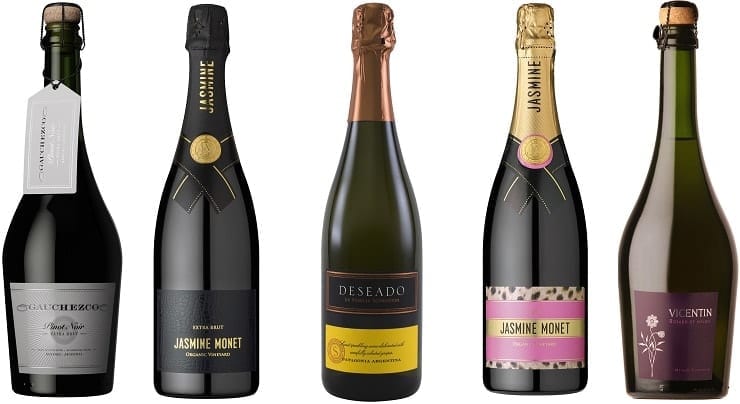A Glimpse of Argentine Sparkling Wine
13th March 2017

I saw it on my first evening in Mendoza, when my future father-in-law took me to an Asado (don’t call it ‘Barbecue’) with his friends. I am sure it goes under dozens of names around the globe, but here in Argentina it is known as ‘Lemon Champ’: sparkling wine, preferably Extra Brut, with a scoop or two of lemon ice-cream. Stirred, not shaken.
It has been a long time since my last ‘Lemon Champ’, but my family and I close almost every lunch on Sunday, at
my father-in-law’s house, with a glass or two of bubbly. In the usually very hot summers here in Mendoza, people prefer drinking their sparkling wines close to freezing point. As the predominantly used Chardonnay and Pinot Noir grapes get 320 days of sunshine per year here in Mendoza and many of them are grown at high altitudes with a significant amplitude regarding temperatures during night and day, they make for highly aromatic base wines, whose bouquet still unfolds at low temperatures. Chardonnay and Pinot Noir represent the varieties in Mendoza that are
normally harvested first, in general at the end of January or beginning of February. The sparkling wine industry has come a long way since my first encounter with ‘Lemon Champ’ in 2005. As a side note: Although intellectual property laws prohibit the commercial use of the term ‘Champán’ for sparkling wines, almost everybody in Argentine uses the term in everyday private life. As regards labels and marketing, ‘Espumante’ or ‘Vino Espumoso’ are the most commonly used terms. What used to be a de facto captive market, dominated by Chandon and its lower-price brand Mercier, has turned into a market teeming with players of all sorts and sizes. Of course, many Argentines still associate Chandon with high-quality sparkling wine, no matter if produced under the Champenoise or Charmat methods and the Baron B Brut Rosé (named after Bodegas Chandon’s first President, Baron Bertrand de Ladoucette) is definitely one of my favorites.
However, there are a growing number of wineries breathing down Chandon’s neck when it comes to making outstanding
sparkling wine. There is the powerhouse Nieto Senetiner, with their meticulous and highly creative winemaker Roberto González, whose latest coups include Emilia Dulce, a wildly successful sparkling wine made entirely from
Muscat grapes. There are smaller wineries like Dante Robino, whose production of sparkling wine makes up almost 80% of their entire production and who are constantly gaining ground on the big players in the Argentine sparkling wine market. Finally, there are rare examples like Cruzat, a winery that dedicates itself completely to making top-level bubbles, with sparkling wine Guru Pedro Rosell at the helm. During my first visit to Cruzat, Rosell, an elderly gentleman with great charisma and an utter lack of pretension, showed me a row of unusually tall, super-slim
stainless-steel tanks and explained to me that the design facilitates temperature control and more importantly, gives the yeasts extra time to sink to the bottom of the tank during fermentation, allowing the base wine to become more aromatic. Of course, the tanks were created by the Maestro himself. By the way, Cruzat Clásico Extra Brut is my personal favorite among Argentine sparkling wines…so far.
Well, I hope this has given you a brief glimpse into the world of sparkling wine in Argentina. If you feel like visiting Mendoza, I would suggest October or April, as these months have agreeable temperatures, still considered high in most European summers. Mendoza boasts over 1,000 wineries, and over a hundred are open for visits, many
offering gourmet lunches where the food is perfectly paired with the wines. In most of the cases, sparkling wine is
served last, but certainly not least.
![]()
Glass of Bubbly
Executive editor of news content for the website Please enjoy the articles that we share - We hope you find our love for Champagne & Sparkling Wines both interesting and educational.
